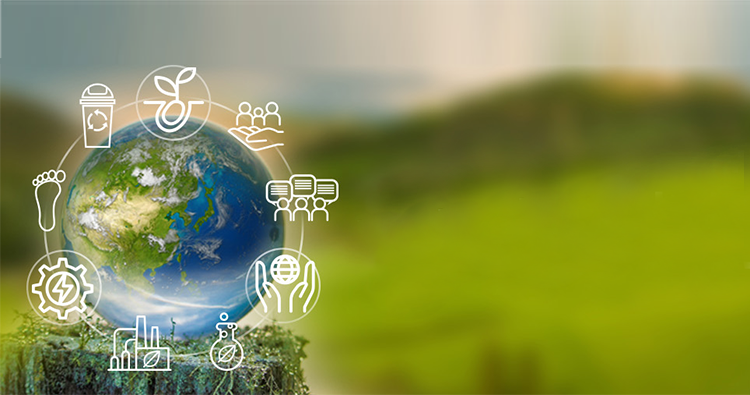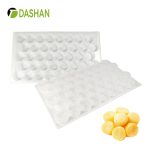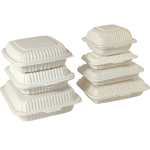Quick Summary
Bagasse plates, made from sugarcane fibers, transform agricultural waste into sturdy, compostable tableware. Ideal for takeout, home dining, and events, they offer a sustainable alternative to plastics, reducing environmental impact while supporting a circular economy.
Introduction
Imagine this scene: you’ve just ordered takeout, and when you open the packaging, your food rests on a seemingly ordinary plate. It’s off-white, slightly textured, and surprisingly sturdy. A label catches your eye: “Bagasse Plate.” You might wonder—can the leftovers from sugarcane really become a plate on your dining table?
This is not just a clever use of materials; it’s a glimpse into the future of sustainable living. Bagasse plates are transforming the way we eat, dispose of foodware, and think about waste. In this article, we’ll explore the fascinating journey of bagasse plates, from agricultural waste to eco-friendly dining, and why they are becoming a small but powerful part of our daily green lifestyle.
1. From Sugarcane Fields to the Table: Waste Turned Wonder
Sugarcane is one of the world’s most common crops, primarily used for sugar production. After juice extraction, a large amount of fibrous residue remains—called bagasse. Traditionally, this byproduct was burned as fuel or discarded, leading to waste and environmental pollution.
With the rise of sustainability awareness, scientists and entrepreneurs began to see potential in bagasse. Rich in plant fibers, naturally strong, heat-resistant, and biodegradable, bagasse can be processed into plates, trays, and bowls. What was once considered waste now holds immense value.
The Environmental Context
Global plastic pollution has become one of the most pressing environmental issues. Single-use plastics, particularly plates and takeaway containers, are major contributors. Bagasse plates offer a natural solution: instead of adding to landfills or oceans, agricultural waste becomes reusable in a different form, fully compostable under industrial conditions.
2. The Technology Behind the Magic
Many wonder how leftover sugarcane fibers become sturdy, disposable plates. The process is both simple and ingenious:
-
Fiber Extraction and Cleaning
After sugarcane is pressed, the leftover fibers are carefully sorted and washed to remove impurities and residual sugar, leaving clean natural fibers. -
Molding and Pressing
The cleaned fibers are mixed with minimal food-safe binders, then pressed under high heat and pressure. This forms plates of different sizes and shapes, strong enough to handle hot foods without bending or breaking. -
Drying and Finishing
The molded plates are dried and trimmed. No plastic coatings or harmful chemicals are added, ensuring that they remain fully compostable. -
Certification and Standards
To guarantee that the plates are truly biodegradable, most manufacturers adhere to standards such as EN 13432, ensuring that plates can break down in industrial composting facilities without leaving harmful residues.
3. Everyday Heroes: Bagasse Plates in Action
Bagasse plates have quickly gained popularity in multiple real-life scenarios:
a. Takeout and Delivery
Restaurants and cafés use bagasse plates for hot meals because they resist heat and retain shape. Customers enjoy a sturdy, eco-friendly option without worrying about chemical leaching from plastics.
b. Home Dining and Parties
Lightweight, disposable, and visually appealing, bagasse plates are ideal for family dinners, picnics, and birthday parties. Parents especially appreciate the non-toxic material that’s safe for children.
c. Catering and Large Events
Festivals, corporate events, and outdoor gatherings have embraced bagasse plates as a sustainable alternative to single-use plastic. They reduce landfill contributions while maintaining convenience and hygiene.
d. Airline and Institutional Use
Some airlines now use bagasse trays for in-flight meals, and universities have piloted biodegradable trays and plates in cafeterias, balancing sustainability with practicality.
4. Why Choose Bagasse Plates?

For Consumers:
-
Non-toxic, safe for hot and cold foods.
-
Lightweight and easy to handle.
-
Natural texture enhances the dining experience.
For Businesses:
-
Aligns with global sustainability trends and eco-conscious branding.
-
Reduces waste disposal costs.
-
Demonstrates commitment to corporate social responsibility (CSR).
For the Environment:
-
Fully compostable, reducing landfill contributions.
-
Replaces plastic and foam, combating white pollution.
-
Supports a circular economy by turning agricultural waste into useful products.
5. The Science and Benefits Behind Bagasse
Bagasse plates aren’t just “eco-friendly” in marketing—they provide tangible environmental benefits:
-
Reduced Carbon Footprint
Producing bagasse plates uses less energy than making plastic or foam alternatives. Moreover, utilizing agricultural residues avoids additional land use for growing separate raw materials. -
Waste Diversion
By converting what was previously considered waste into a useful product, bagasse plates help divert organic material from incineration or landfills. -
Biodegradability and Compostability
Unlike plastics that take hundreds of years to degrade, bagasse plates can break down within months in industrial composting conditions, eventually turning into nutrient-rich compost.
6. Expert Opinions and Market Trends
Environmental experts praise bagasse plates for providing an immediate solution to single-use plastic pollution, while still acknowledging limitations:
-
Composting Infrastructure Matters: Experts note that for maximum environmental benefit, proper industrial composting facilities are needed. If bagasse plates are disposed of in general waste, the impact is reduced.
-
Consumer Education Is Key: Misunderstandings about biodegradability can lead to contamination of recycling or compost streams. Clear labeling and public awareness are crucial.
-
Market Adoption: Surveys show increasing consumer willingness to pay slightly more for sustainable packaging. Cafés, takeout services, and retailers are responding by adopting bagasse plates as a standard.
Globally, the market for bagasse and other plant-fiber-based tableware is growing rapidly. Innovations are exploring rice husks, wheat straw, and corn starch as additional sustainable materials.
7. Bagasse Plates and Lifestyle Integration
Using bagasse plates is not only a practical choice but also a lifestyle statement:
-
For Green Homes: Incorporate bagasse plates in daily meals, family picnics, and special occasions.
-
For Conscious Eaters: Selecting biodegradable tableware aligns with broader values of sustainability and responsible consumption.
-
For Social Gatherings: Hosting parties with compostable tableware can spark conversations about eco-conscious living among friends and family.
This integration into everyday life makes sustainability accessible and tangible.
8. The Future of Green Dining

Consumer demand for eco-friendly products continues to rise. Bagasse plates are just one step toward sustainable dining. Future trends include:
-
Hybrid Solutions: Combining reusable and biodegradable options for different contexts.
-
New Agricultural Waste Applications: Expanding to other byproducts like corn husk and rice straw.
-
Enhanced Design and Durability: Making biodegradable tableware even more versatile, visually appealing, and user-friendly.
With continued innovation and consumer support, biodegradable tableware can become a norm rather than a niche product.
Conclusion
Yes, the leftovers from sugarcane can truly become your plate. Bagasse plates are more than disposable tableware—they represent a shift in mindset, a blend of science, design, and environmental responsibility.
From takeout meals to home dining, from parties to corporate events, these plates prove that everyday choices can make a meaningful difference. So next time you see a bagasse plate, remember: it’s not just a plate—it’s a small piece of green magic, turning waste into wonder, and making sustainable living part of your daily routine.
FAQ: Bagasse Plates and Biodegradable Tableware
Q1: What are bagasse plates made of?
Bagasse plates are made from the fibrous residue left after extracting juice from sugarcane. The fibers are cleaned, molded under heat and pressure, and shaped into plates, trays, or bowls.
Q2: Are bagasse plates safe for hot food?
Yes. Bagasse plates are naturally heat-resistant and can hold both hot and cold foods without leaching chemicals, making them safe for everyday use.
Q3: Are bagasse plates biodegradable and compostable?
Yes. Certified bagasse plates follow standards such as EN 13432, ensuring that they can decompose fully in industrial composting facilities.
Q4: Can bagasse plates be reused?
Bagasse plates are generally designed for single use. However, they are sturdy enough for short-term reuse in home or office settings if handled carefully.
Q5: How do bagasse plates benefit the environment?
Bagasse plates reduce reliance on plastic and foam, divert agricultural waste from landfills, and are fully compostable, thus helping to minimize pollution and support a circular economy.
Q6: Where are bagasse plates commonly used?
They are widely used in takeout and delivery, home dining, parties, catering, festivals, airline meals, and other institutional settings seeking eco-friendly alternatives.
Q7: What challenges exist with bagasse plates?
Challenges include ensuring proper composting infrastructure, consumer education on disposal, and slightly higher costs compared to conventional plastic products.
References and Further Reading
-
European Bioplastics – Bioplastics and Bagasse Products Overview:
https://www.european-bioplastics.org -
DIN EN 13432 Compostability Standard Overview:
https://www.din.de/en/getting-involved/standards-committees/nmp/standards/wdc-beuth:din21:348902348 -
Environmental Protection Agency (EPA) – Sustainable Packaging Guide:
https://www.epa.gov/smm/sustainable-management-materials-packaging -
Deutsche Umwelthilfe (DUH) – Green Packaging Campaigns:
https://www.duh.de -
Statista – Biodegradable Packaging Market Insights:
https://www.statista.com/topics/5854/bioplastics-in-europe -
Fraunhofer Institute for Environmental, Safety, and Energy Technology (UMSICHT) – Research on Bioplastics:
https://www.umsicht.fraunhofer.de -
BMUV – German Federal Ministry for the Environment, Nature Conservation, Nuclear Safety and Consumer Protection:
https://www.bmuv.de




